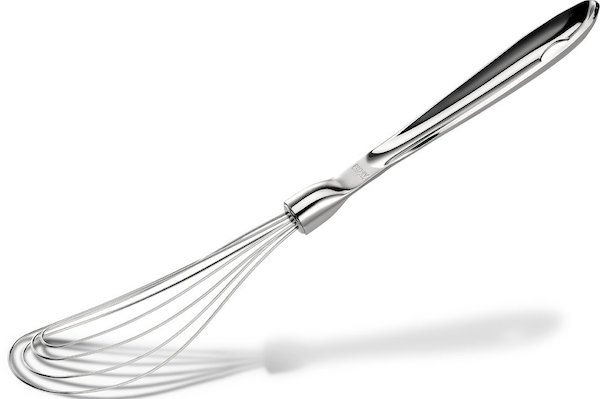
Whisk
1. Whisk (n.) A mixing tool designed so its many strands of looped wire make it effective for beating. (v.) To beat with a whisk until well mixed.
Most of us have at least one whisk in our kitchen, but do we really know how to use it? Whisks, sometimes called whips, come in all shapes and sizes. With so many options, it’s easy to feel confused about which one to choose. Do you need a balloon whisk, a straight whisk, or one of those strange ball-in-ball whisks?
To help, I’ve just updated my whisk web page. It dives into the history of whisks, explains the different types, and shows how to use them. I’ll soon add more details about whisking techniques and tips for choosing the right whisk for your cooking needs.
I’ve collected quite a few whisks over the years. They seem to appear every holiday season, gifted by family and friends along with other fun kitchen gadgets. One whisk baffled me until I watched Peter’s video—the sauce whisk that stands up in the pan. Who knew? Now, I finally understand what it’s for!
How to Buy A Whisk
Buying a whisk might seem simple, but choosing the right one makes a big difference. Whisks come in many shapes, sizes, and materials. Each type works best for specific tasks. Here’s what to consider when buying a whisk.
First, think about what you’ll use it for. If you bake often, a balloon whisk is essential. Its rounded shape adds air to eggs, cream, or batter. For cooking sauces or gravies, go with a flat or sauce whisk. These whisk styles reach the corners of pans and prevent lumps.
Next, consider the material. Stainless steel is durable and resists rust. It’s great for most jobs. Silicone-coated whisks are perfect for nonstick pans since they won’t scratch. Avoid plastic whisks for heavy-duty tasks—they’re less sturdy and might not last long.
Size matters too. A large whisk works well for big bowls and pots, while a smaller whisk is perfect for small tasks like whisking vinaigrette or eggs. It’s helpful to have both in your kitchen.
Lastly, test the handle. Look for a comfortable grip that feels secure in your hand. A poorly designed handle can make long tasks tiring.
With the right whisk, cooking becomes easier and more enjoyable. Take your time and choose wisely!
How to Manage A Whisk
Holding and using a whisk properly makes a big difference in your cooking. Start by gripping the handle firmly but not too tight. Use your dominant hand for better control. Rest your thumb on top of the handle for stability, and let your fingers wrap comfortably around it.
Position the whisk in the bowl or pan at a slight angle. This helps you reach more surface area and mix evenly. Keep the whisk’s head fully in contact with the ingredients. If you lift it too much, you’ll lose control and splatter.
When whisking, use your wrist, not your arm. Move in a circular or figure-eight motion for most tasks, like beating eggs or mixing batter. For delicate tasks, like making whipped cream, use quick, light strokes to add air without overmixing.
If you’re whisking in a pan, use a flat whisk to scrape the bottom and prevent sticking. Press gently but move continuously. For nonstick pans, use a silicone-coated whisk to avoid scratches.
Work at a steady pace, adjusting speed as needed. Go faster to whip, slower to fold or combine gently. With practice, you’ll whisk like a pro and achieve smoother, fluffier, and better-mixed results every time.
History of The Whisk
One day in the distant, murky past, someone grabbed a bunch of little twigs, held them in a bundle at one end, and used them to stir their food. The whisk was born.
From those very humble beginnings comes the whisk we know today. When someone says “whisk,” most think of a kitchen tool with a long, cylindrical handle holding wires loops.
While this is still true, there is a wide variety of specialized whisks made out of various materials available for us to use.
First, let’s take a brief look at the history of the whisk and its function. Then, we will look at the varieties of whisks and decide if we need all of them or if there really is an all-purpose whisk out there.
There is not a lot of information out there about the history of whisks, but I still stand by my scenario above. The first written mention of whisks came in The Frugal Housewife, a book published in London in 1765, although I am certain that the Japanese have been using bamboo whisks in tea preparation for centuries.
Julia Child introduced Americans to the modern whisk in the 1960s. She probably held it up before the cameras during a taping of The French Chef, and Americans’ jaws dropped to the floor.
What is that thing? And look how fast it whipped up that cream?! We had to have them, so we went and bought them. As we bought them, companies kept making more and more different kinds of products, so we would keep buying.
While we could probably spot a whisk in a lineup of kitchen gadgets, we might not all know how they work. When you pull the thin wires of a whisk through the liquid, such as egg white or cream, each wire creates a small vacuum behind it as it is pulled through.
Air rushes in to fill this vacuum and is thus incorporated into whatever we are whisking.
The more wires a whisk has, the more vacuum streams are filled with air, and the more quickly your egg whites or cream will whip into a stable foam. Knowing that it’s pretty easy to see that the more wires a whisk has, the better for creating foam.
Do we really need all these whisks?
Whisks can be categorized in two basic ways: by number of wires and by shape. Round whisks with many wires are best for whipping air into liquids. Flat whisks with fewer wires whip in less air and are better for mixing products that require a smooth, dense finish, such as sauces and gravies.
Another variable that isn’t often addressed is the speed at which you whisk. The faster you whisk, the larger your vacuum streams, the more air rushes in to fill the vacuum and the faster you can whip up a stable foam. Whisk more slowly for a denser texture; whisk rapidly for a lighter texture.
Round Whisks with Lots of Wires
Balloon Whisk – The balloon whisk can have a very round shape or a more elongated tear-drop shape. The defining characteristic of the balloon whisk is multiple flexible wires arranged in a decidedly broad pattern at the business end and firmly connected at both ends to a handle.
The balloon whisk is ideal for whipping up very stable foams quickly.

French Whisk
A French whisk, similar to a balloon whisk, is a kitchen utensil designed for mixing and whisking ingredients. The French whisk differs somewhat from the balloon whisk because its shape is less rounded.
It has a long handle and a rounded head filled with thin, flexible wires. The wires are spread out across the head’s surface, allowing for efficient mixing and whisking without splashing or spilling.
One of the main benefits of using a French whisk is its ability to incorporate air into ingredients, creating a light and fluffy texture. It is particularly useful for beating egg whites, whipping cream, and making meringues, as the thin wires create a stable foam that can hold its shape.
A French whisk is a versatile and practical kitchen tool that can be used for mixing and stirring a variety of ingredients, such as sauces, dressings, and soups. Its long handle and balloon-shaped head allow for easy reach and control.
When choosing a French whisk, consider the size and shape of the utensil and the type of material it is made from. French whisks are available in various sizes, from small to large, and are typically made from stainless steel or silicone. Stainless steel French whisks are durable and corrosion-resistant, while silicone French whisks are non-stick and heat-resistant, making them perfect for use with non-stick pans.
In conclusion, a French whisk is an essential kitchen tool that is useful for a wide range of tasks, including whisking, mixing, and stirring. Its long handle and balloon-shaped head make it easy to control and maneuver, and it is an indispensable tool in any home or professional kitchen.

Piano Whisk
A piano whisk is a kitchen utensil designed for mixing and whisking ingredients. It has a long handle and a wide, flat head filled with thin, flexible wires. The wires are spread out across the head’s surface, allowing for efficient mixing and whisking without splashing or spilling.
One of the main benefits of using a piano whisk is its ability to reach the corners and edges of a container, making it easier to mix ingredients evenly and avoid leaving any unmixed pockets. The flat shape also makes it useful for mixing thin, liquid-based ingredients, such as sauces and dressings, as more surface area comes into contact with the ingredients.
In addition to its mixing capabilities, a piano whisk can be used to scrape the sides and bottom of a container, making it easier to incorporate all ingredients and avoid wasting any food. It is also useful for smoothing lumpy mixtures, such as gravy or roux, as the thin wires can break up clumps and create a smooth consistency.
When choosing a piano whisk, it’s important to consider the size and shape of the utensil and the type of material it is made from. Piano whisks are typically made from stainless steel or silicone and are available in various sizes to suit different mixing and whisking needs. Stainless steel piano whisks are durable and corrosion-resistant, while silicone piano whisks are non-stick and heat-resistant, making them perfect for use with non-stick pans.
In conclusion, a piano whisk is a versatile and practical kitchen tool that is essential for any home cook or professional chef. Its long handle and wide, flat head make it perfect for mixing and whisking various ingredients.

Flat Whisks with Few Wires
Sauce Whisk
A flat whisk is a kitchen utensil designed for mixing and stirring ingredients in a flat or shallow container. It has a wide, flat shape with thin, flexible wires spread out across the surface, allowing for efficient mixing and stirring without splashing or spilling.
One of the main benefits of using a flat whisk is its ability to reach the corners and edges of a container, making it easier to mix ingredients evenly and avoid leaving any unmixed pockets. It is also useful for mixing thin, liquid-based ingredients, such as sauces and dressings, as the flat shape allows more surface area to come into contact with the ingredients.
In addition to its mixing capabilities, a flat whisk can be used to scrape the sides and bottom of a container, making it easier to incorporate all ingredients and avoid wasting any food. It is also useful for smoothing out lumpy mixtures, such as gravy or roux, as the thin wires break up any clumps and create a smooth consistency.
When choosing a flat whisk, it’s important to consider the size and shape of the utensil and the type of material it is made from. Flat whisks are available in various sizes, from small to large, and are typically made from stainless steel or silicone. Stainless steel flat whisks are durable and corrosion-resistant, while silicone flat whisks are non-stick and heat-resistant, making them perfect for use with non-stick pans.
In conclusion, a flat whisk is a versatile and practical kitchen tool that is essential for any home cook or professional chef. Its wide, flat shape and thin, flexible wires make it perfect for mixing and stirring various ingredients.

Vinaigrette Whisk—A vinaigrette whisk is a small whisk whose business end consists of one U-shaped wire with another wire coiled around it like a spring. It is very useful for mixing and emulsifying small amounts of ingredients, such as a cup of dressing or a couple of eggs for an omelet.
A vinaigrette whisk is a kitchen utensil specifically designed for making vinaigrette and other emulsified sauces. It has a long handle and a small, narrow head filled with thin, flexible wires. The wires are spread out across the surface of the head, allowing for efficient mixing and whisking without splashing or spilling.
One of the main benefits of using a vinaigrette whisk is its ability to quickly and easily combine oil and vinegar to create a smooth and stable emulsion. The whisk’s thin wires break up the oil into small droplets, which are then suspended in the vinegar, creating a smooth and creamy sauce.
In addition to making a vinaigrette, a vinaigrette whisk can also be used for mixing and whisking various other ingredients, such as dressings, sauces, and marinades. Its long handle and narrow head make it easy to control and maneuver, and it is a useful tool for any cook who wants to create smooth, emulsified sauces.
When choosing a vinaigrette whisk, it’s important to consider the size and shape of the utensil and the type of material it is made from. Vinaigrette whisks are typically made from stainless steel or silicone and are available in various sizes to suit different mixing and whisking needs. Stainless steel vinaigrette whisks are durable and corrosion-resistant, while silicone vinaigrette whisks are non-stick and heat-resistant, making them perfect for use with non-stick pans.
In conclusion, a vinaigrette whisk is a specialized kitchen tool that is essential for any cook who wants to create smooth and stable emulsified sauces, such as vinaigrette. Its long handle and narrow head make it easy to control and maneuver, and it is an indispensable tool in any kitchen.

Whisks that Defy Categorization
Twirl Whisk—Not your standard whisk shape, the twirl whisk consists of a handle with a continuous coiled wire, like a spring, at one end. It can be used by pushing up and down like a plunger or, as the name implies, by twirling the handle between your hands. Twirl whisks are often used to mix and foam beverages like hot chocolate.
A twirl whisk is a kitchen utensil designed for mixing and whisking ingredients. It has a long handle and a small, narrow head filled with thin, flexible wires. The wires are spread out across the surface of the head, allowing for efficient mixing and whisking without splashing or spilling.
One of the main benefits of using a twirl whisk is its ability to quickly and easily combine ingredients, resulting in a smooth and homogenous mixture. The whisk’s thin wires can break up clumps and evenly distribute the ingredients, making it a useful tool for creating smooth sauces, dressings, and marinades.
In addition to its mixing and whisking capabilities, a twirl whisk can be used to scrape the sides and bottom of a container, making it easier to incorporate all ingredients and avoid wasting any food. It is also useful for smoothing lumpy mixtures, such as gravy or roux, as the thin wires can break up clumps and create a smooth consistency.
When choosing a twirl whisk, consider the size and shape of the utensil and the type of material it is made from. Twirl whisks are typically made from stainless steel or silicone and are available in a range of sizes to suit different mixing and whisking needs. Stainless steel twirl whisks are durable and corrosion-resistant, while silicone twirl whisks are non-stick and heat-resistant, making them perfect for use with non-stick pans.
In conclusion, a twirl whisk is a versatile and practical kitchen tool that is essential for any home cook or professional chef. Its long handle and narrow head make it perfect for mixing and whisking various ingredients.

Dough Whisk -The dough whisk usually has a wooden handle. The whisk end is made of one wire coiled arranged in a flat spiral. The dough whisk is ideal for mixing stiff doughs and batters.
A dough whisk is a type of kitchen utensil that is specifically designed for mixing and kneading dough. It has a long handle with a wide, flat head that is filled with thin, flexible wires. The wires are spread out across the surface of the head, allowing for efficient mixing and kneading without splashing or spilling.
One of the main benefits of using a dough whisk is its ability to quickly and easily combine dry and wet ingredients, resulting in a smooth and cohesive dough. The thin wires of the whisk are able to break up any clumps and evenly distribute the ingredients, making it a useful tool for creating bread, pastry, and other dough-based recipes.
In addition to its mixing and kneading capabilities, a dough whisk can also be used to scrape the sides and bottom of a mixing bowl, making it easier to incorporate all of the ingredients and avoid wasting any food. It is also useful for smoothing out lumpy dough, as the thin wires are able to break up any clumps and create a smooth consistency.
When choosing a dough whisk, it’s important to consider the size and shape of the utensil, as well as the type of material it is made from. Dough whisks are typically made from stainless steel or silicone, and are available in a range of sizes to suit different mixing and kneading needs. Stainless steel dough whisks are durable and resistant to corrosion, while silicone dough whisks are non-stick and heat-resistant, making them perfect for use with non-stick pans.
In conclusion, a dough whisk is a specialized kitchen tool that is essential for any cook who wants to create smooth and cohesive dough-based recipes, such as bread, pastry, and pizza dough. Its long handle and wide, flat head make it easy to control and maneuver.

Ball Whisk – Picture a balloon whisk with all the wires snipped off at the ends. Now, put a little stainless steel ball at the end of each wire, and you get the ball whisk. The ball whisk is a relative newcomer on the whisk scene.
Straight wires are attached to a handle at one end and tipped with a small ball. Some models coat the balls with silicone for use in non-stick pans. Ball whisks are good at getting into the corners of pans, and the weight of the balls causes the wires to oscillate as they are drawn through your ingredients.
This increases the vacuum stream and can help you whip much more quickly and effectively.
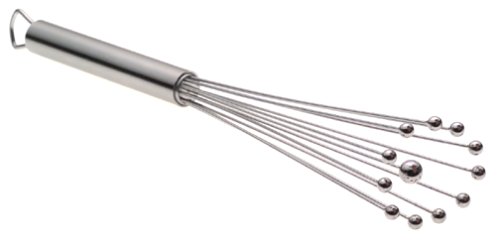
Matcha Whisk
A matcha whisk, also known as a chasen, is a traditional Japanese kitchen utensil that is specifically designed for preparing matcha tea. It is made from bamboo or other natural materials, and has a long handle with a small, narrow head that is filled with thin, flexible wires. The wires are spread out across the surface of the head, allowing for efficient mixing and whisking without splashing or spilling.
One of the main benefits of using a matcha whisk is its ability to quickly and easily combine matcha powder and water to create a smooth and frothy tea. The thin wires of the whisk are able to break up the clumps of matcha powder and evenly incorporate the water, creating a consistent and creamy texture.
In addition to preparing matcha tea, a matcha whisk can also be used for mixing and whisking a variety of other ingredients, such as sauces, dressings, and marinades. Its long handle and narrow head make it easy to control and maneuver, and it is a useful tool for any cook who wants to create smooth, emulsified mixtures.
When choosing a matcha whisk, it’s important to consider the size and shape of the utensil, as well as the type of material it is made from. Matcha whisks are typically made from bamboo or other natural materials, and are available in a range of sizes to suit different mixing and whisking needs. Bamboo matcha whisks are lightweight and durable, while other natural material matcha whisks are also durable but may have a slightly different texture.
In conclusion, a matcha whisk is a specialized kitchen tool that is essential for any tea lover who wants to prepare traditional Japanese matcha tea. Its long handle and narrow head make it easy to control and maneuver.

Other specialty whisks are on the market, like the “ball in ball” whisk and the “double balloon” whisk. While these whisks will most likely get the job done, they are, by and large, novelties. Unless you’d like to go into whisk collecting, you probably don’t need to spend your money on one.
If you have the space, I recommend owning a couple of sauce whisks, one large and one small, and a couple of round whisks—small and large balloon or piano. If you are working with limited space and aren’t a whisk aficionado, a good-sized French whisk is an all-purpose whisk that will meet your needs nicely.
No matter how many whisks you buy, make sure that you buy good quality stainless steel whisks with the wires sealed into the handle. Since whisking is a repetitive motion, make sure that the handle is comfortable for you to grip.
Check out my recipe for Chocolate Soufflé where you definitely will need a whisk to turn the egg whites into soft peaks.
onlinesources: Whisks
There are lots of sources for purchasing quality Kitchen Gadgets and Housewares including whisks, spoons, measuring devices and all the fun gadgets we home cooks have come to love. I suggest you check out your local department stores and kitchen supply shops but if you’re looking for a wide selection of products and prices, you may want to check out Amazon.com where I buy many of my favorite pieces of cookware.

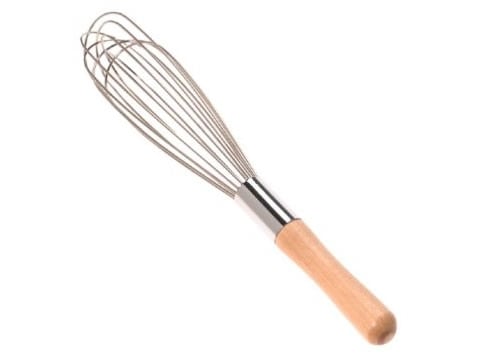




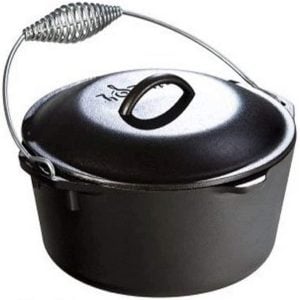
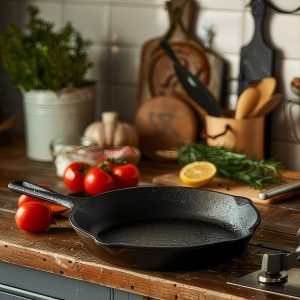

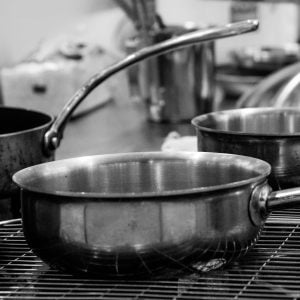
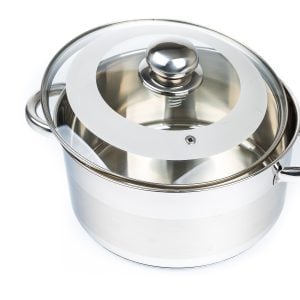
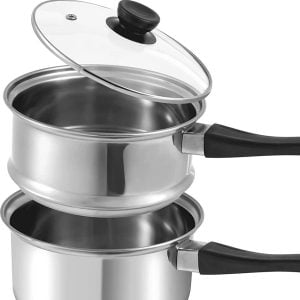
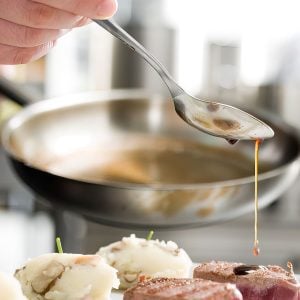


3 Responses
A good compilation and touches on almost everything about whisks. I am surprised you did not add about spiral whisk. This article is a good piece of information though. Thanks!
I want to find another whisk like my mom bought in the 70s or 80s. Rather than the wires just being shoved into the handle or into some plastic fitting with holes, the wires are actually welded together at the base and then I guess there is a rod underneath that that inserts into the handle which is then secure by a a small nail through the top part of the handle. The result is that the wires of the whisk never come loose and the whisk never pops out of the handle. It’s a way better design, and I can’t find any pics of this design online. 🙁 I wish I at least knew what I have here.
Just started working for a company that revolves around food. This info was great! thanks